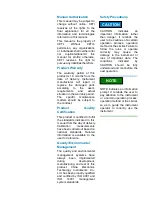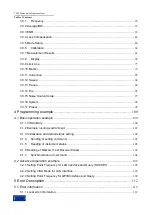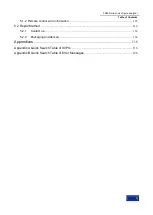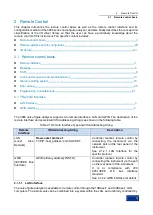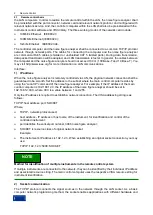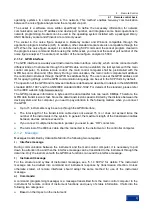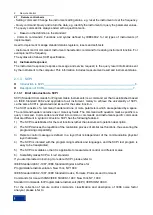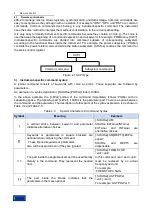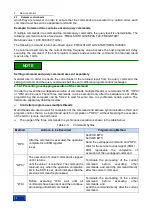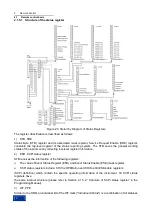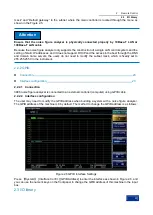
2
Remote Control
2.1 Remote control basis
8
488.2 to manage macros, status registers, synchronization, and data storage. Common commands are
easy to recognize as they all begin with an asterisk. For example *IDN? , *OPC and *RST are common
commands. Common commands don‟t belong to any instrument-specific command. The instrument
uses the same method to interpret them without consideration to the current path setting.
It is very easy to identify instrument-specific commands because they contain a colon (:). The colon is
used between the beginning of a command expression and a keyword, for example: FREQuency[:CW?].
Instrument-specific commands are divided into command subsets of corresponding subsystem
according to the functional block inside the instrument. For example, the power subsystem (:POWer)
contains the power-related command while the status subsystem (:STATus) contains the command for
the status control register.
Figure 2.1 SCPI Type
3) Instrument-specific command syntax
A typical command consists of keywords with colon as prefix.. These keywords are followed by
parameters..
An example of a syntax declaration: [:SOURce]:POWer[:LEVel] -10dBm
In the above example, the [:LEVel] portion of the command immediately follows :POWer with no
separating space. The following part [:LEVel]: -10dBm is the parameter part. There is a space between
the command and the parameter. The description of other parts of the syntax expression is as shown in
Table 2.2 and Table 2.3.
Table 2.2
Special Characters in Command Syntax
Symbol
Meaning
Example
|
A vertical stroke between keyword and parameter
indicates alternative choices.
[:SOURce]:AM:
SOURce EXTernal|INTernal
EXTernal
and
INTernal
are
alternative choices
[]
Keywords or parameters in square brackets are
optional when composing the command
. These implied keywords or parameters
also will be executed even if they are ignored.
[:SOURce]:AM[:DEPTh]:EXPon
ential?
SOURce
and
DEPTh
are
dispensable.
< >
The part inside the angle brackets can't be used literally
literally in the command. They represent the needed
item.
[:SOURce]:FREQ:STOP
<val><unit>
In this command, <val> and <unit>
must be replaced by an actual
frequency and unit.
For example:
:FREQ:STOP 3.5GHz
{ }
The part inside the braces indicates that the
parameters in them are optional.
[:SOURce]:LIST:POWer
<val>{,<val>}
For example: LIST:POWer 5
SCPI
Common command
Subsystem commands
Содержание 3986 Series
Страница 1: ...3986 Series Noise Figure Analyzer Programming Manual...
Страница 4: ......
Страница 8: ...3986 Series noise figure analyzer Table of Contents 4...
Страница 107: ...3 SCPI 3 3 Instrument specific Commands 99...
Страница 119: ...4 Programming example 4 2 Advanced operation example 111...


